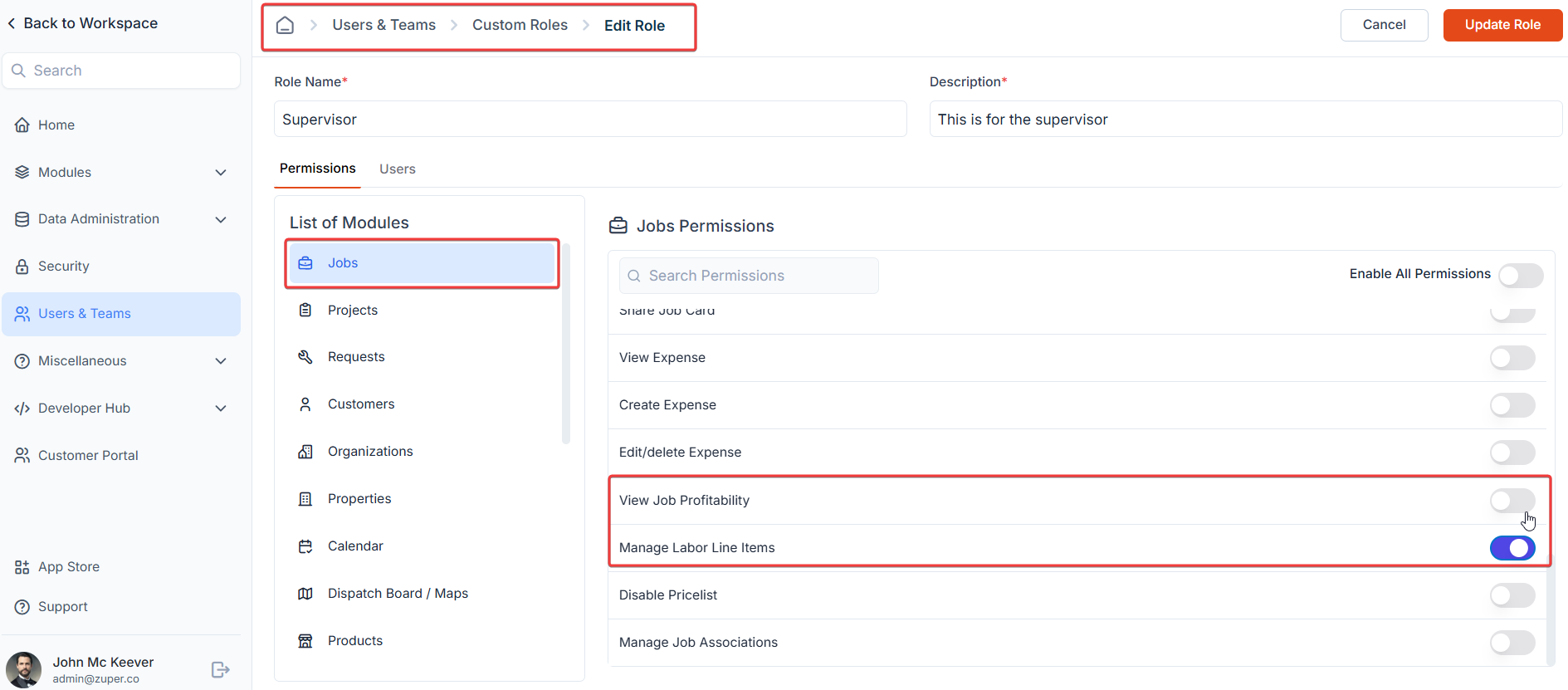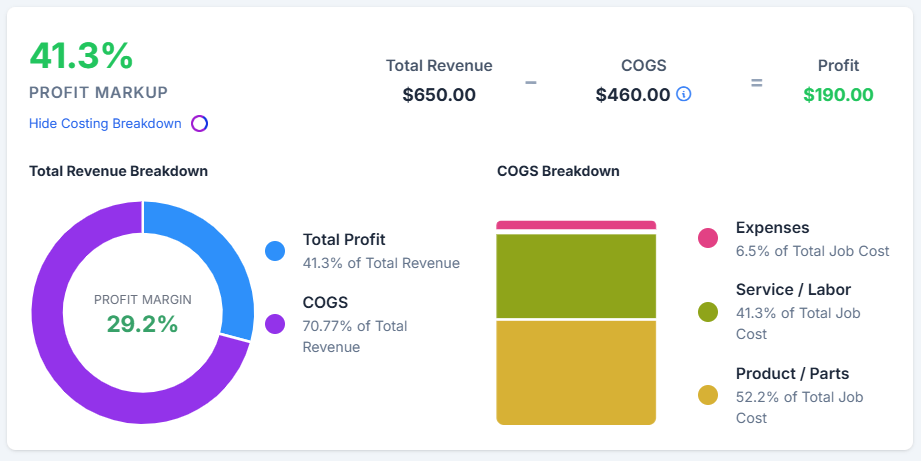
On your Job details page, there is a “Line Items” section that includes details about your parts and services, labor, and expenses for that job. These make up the calculation for your job’s profitability. At the top of this section, you will find the “Job Profitability Bar,” which displays:
- Profit Margin/Markup (%) – This is how much profit you’re making as a percentage of your revenue (or) cost. It’s calculated by dividing your profit by the total revenue (or) cost.
- Total Price (Revenue) – This is what you’re billing the customer (pre-tax and before discounts). It’s calculated from the unit selling price of all your line items, labor charge, and expenses for the Job.
- COGS – This represents the actual costs incurred for the job to complete. The total job cost includes the following components:
- Parts & Services Cost – Shows how much those line items are costing you internally.
- Labor Cost – Displays the cost of your team’s time on the job, calculated based on each user’s hourly rate and recorded hours with corresponding cost code. Refer to the Labor Cost section for detailed information.
- Expenses – Any extra costs you’ve added manually, like meals, materials, or fuel.
- Profit – This is the amount left after subtracting all your actual job costs from your revenue.
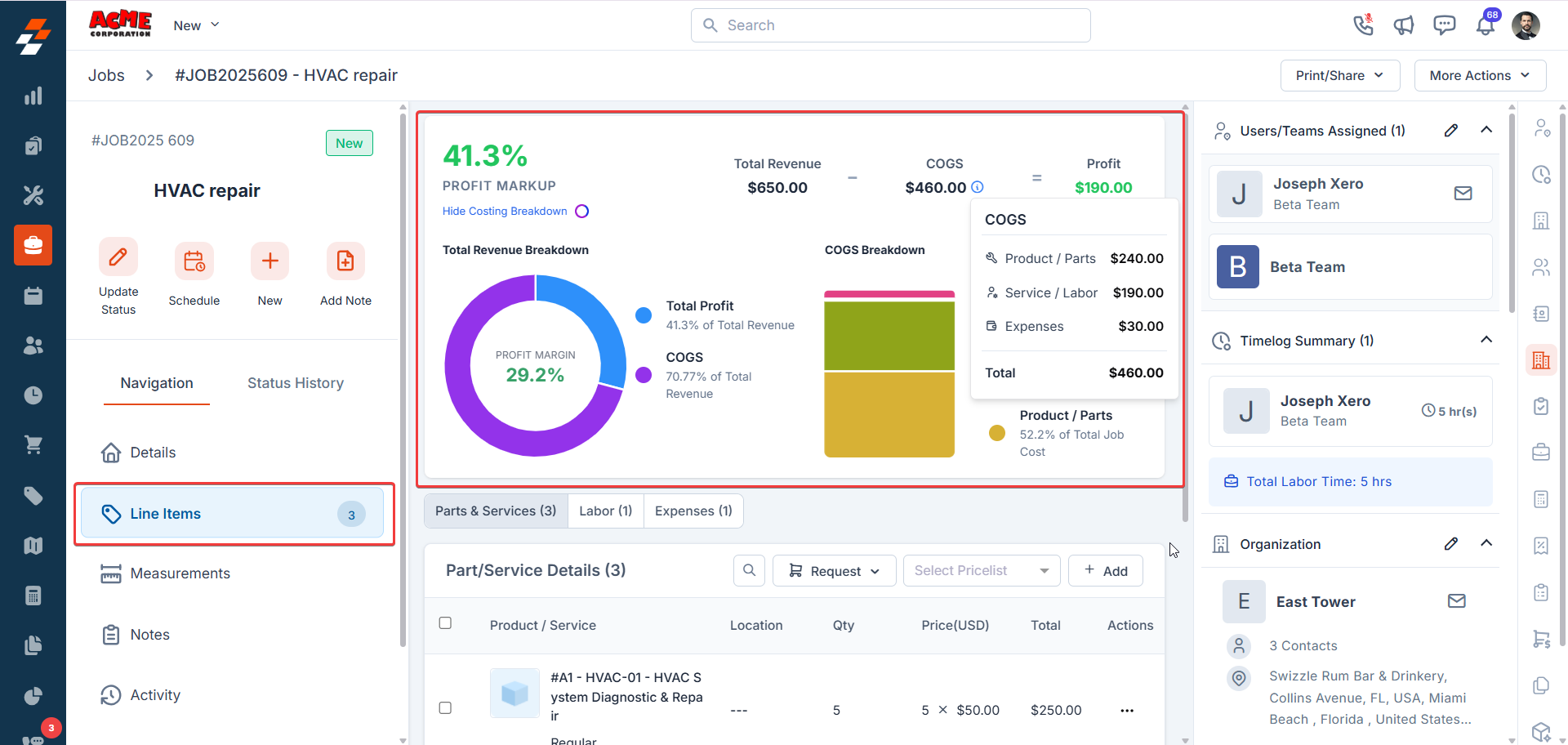
Note: Admins can access Job Costing by default. Other office employees must have the “Manage Labor Line Items and View Job Profitability” permissions to view and manage it. For more information, refer to Job Costing Permissions.
View or Hide the Costing Breakdown
To explore detailed job costing information, click View Costing Breakdown. This section provides a comprehensive breakdown of how profit is calculated across each component, including line items, labor, and expenses. The breakdown includes:- Total Revenue Breakdown - Displays the total job revenue, split between the total job cost and profit.
- COGS Breakdowns - Details the total cost incurred, segmented into expenses, labor costs, and the cost of parts/services.
Line Items: Parts, Products, Services, and Labor
Everything starts with line items. These are the parts, services, and labor you add to a job. Each line item has:- A unit price – what you charge the customer
- A unit cost – what it costs your business
- A quantity – how many units you’re billing for
- Price Code (only for labor services) - if the end customer has different pricing based on various considerations such as urgency, time of day, or day of the week.
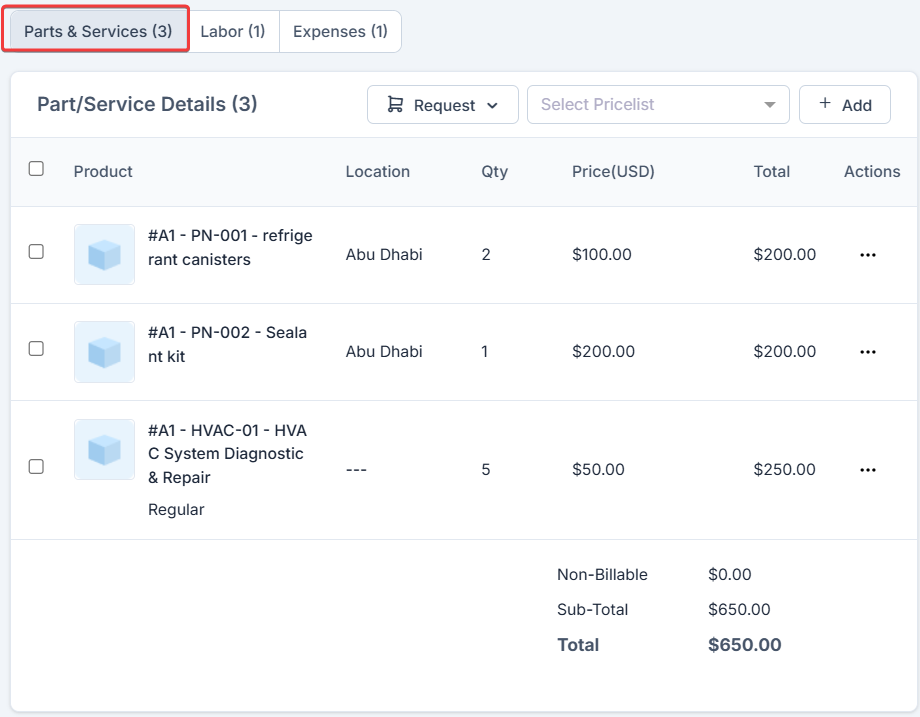
Labor
Labor Cost represents the actual internal expense your business incurs for the time employees spend on a job. It is calculated based on each user’s hourly rate, the recorded hours worked, and the assigned cost code.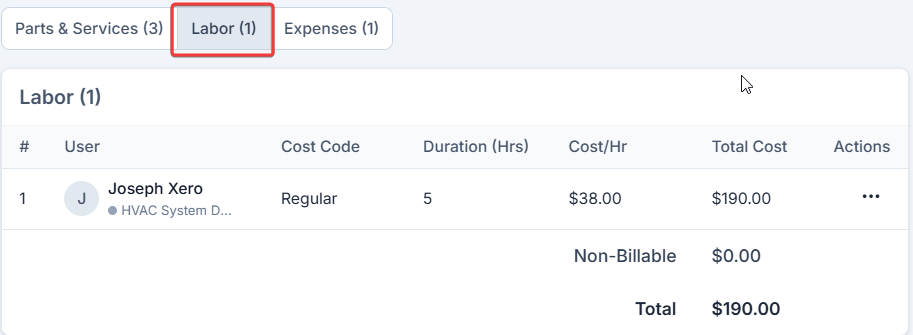
Note: Zuper supports job profitability using the Timelogs feature. When enabled, time spent by users on jobs is automatically captured. Learn more about using Timelogs.
How Labor Cost is Calculated
Labor costs in Zuper are calculated based on three key factors: the time worked by the technician, their Fully Loaded Hourly Rate, and the assigned cost code, such as Regular, Overtime, or Double Time. Zuper uses the following formula to calculate labor cost: Labor Cost = Time Worked × Fully Loaded Hourly Rate × Cost Code The fully loaded rate is configured per user and includes:- The employee’s base hourly wage
- Employer-paid contributions such as taxes, insurance, benefits, or overheads (entered as a burden rate)
Note: To update the Cost Code, go to the Labor Line Item page, select the relevant user, and modify the assigned cost code. The updated cost will automatically be reflected in the job cost breakdown.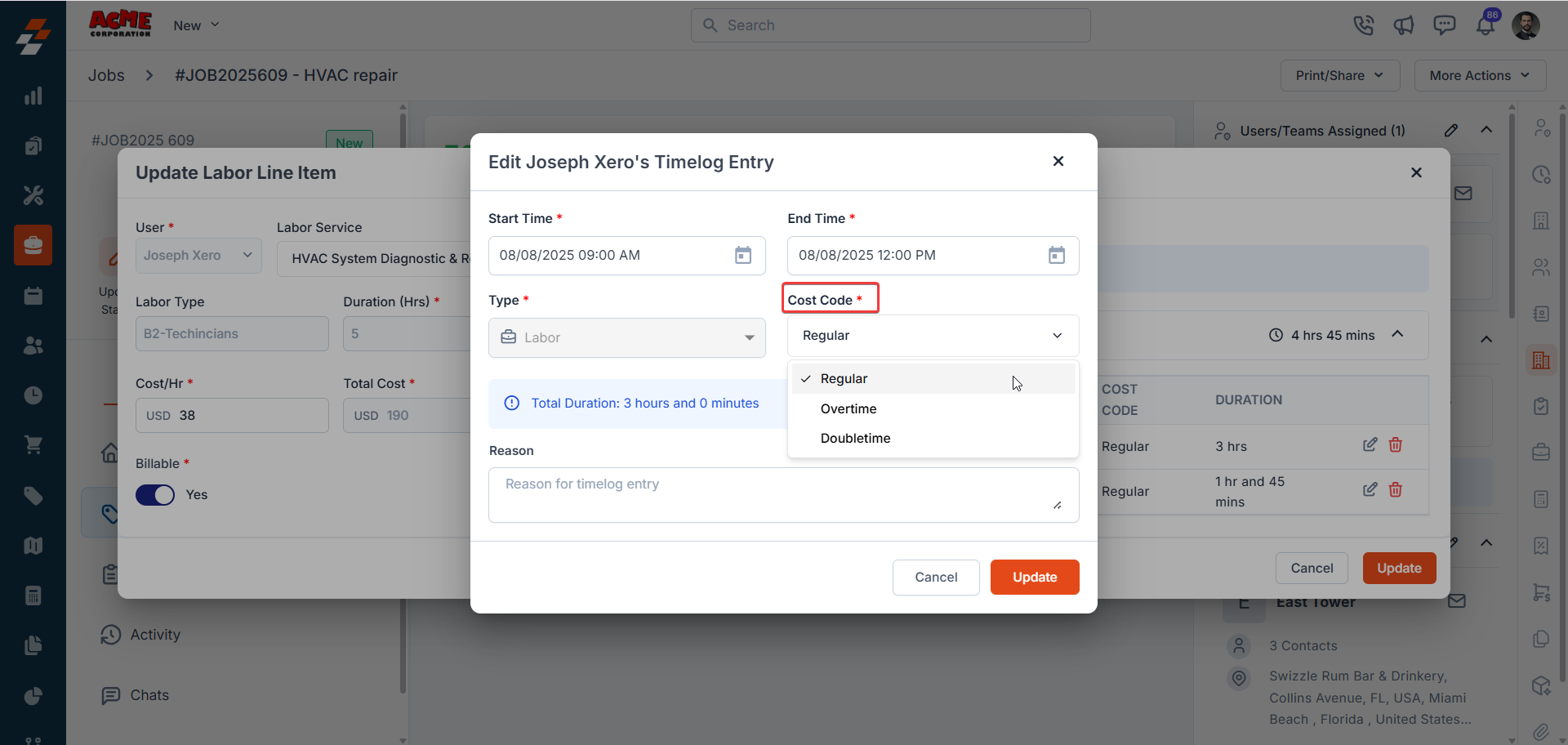

Expenses
Sometimes jobs come with additional costs, like buying materials on-site, paying tolls, or reimbursable expenses. You can log these directly in Zuper.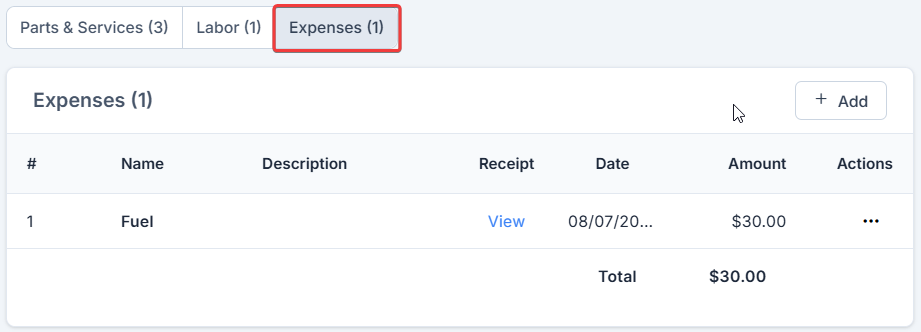
To add an expense:
- Go to the Expenses tab inside the job.
- Click + Add to add a new expense.
- Choose how you want to add the expense details:
- Upload a receipt image to let Zuper AI automatically extract the expense information, or
- Manually enter the expense details.
- Review the details, including the expense name, amount, date, and other relevant fields.
- Choose whether the expense is reimbursable or not.
- Click Save to add the expense.
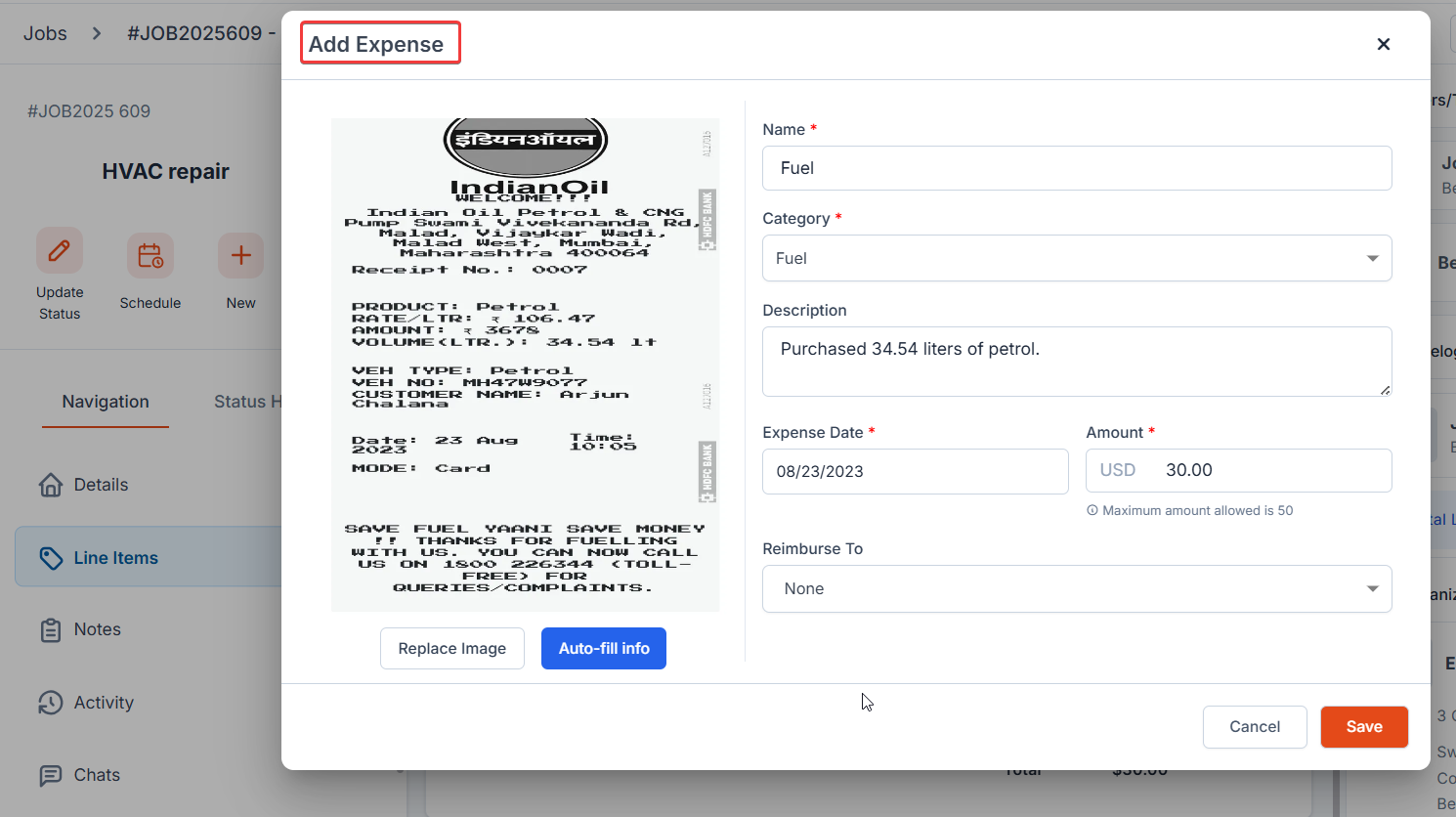
Reporting
Zuper provides a Job Profitability Report for users who have the “View Profitability” permission enabled.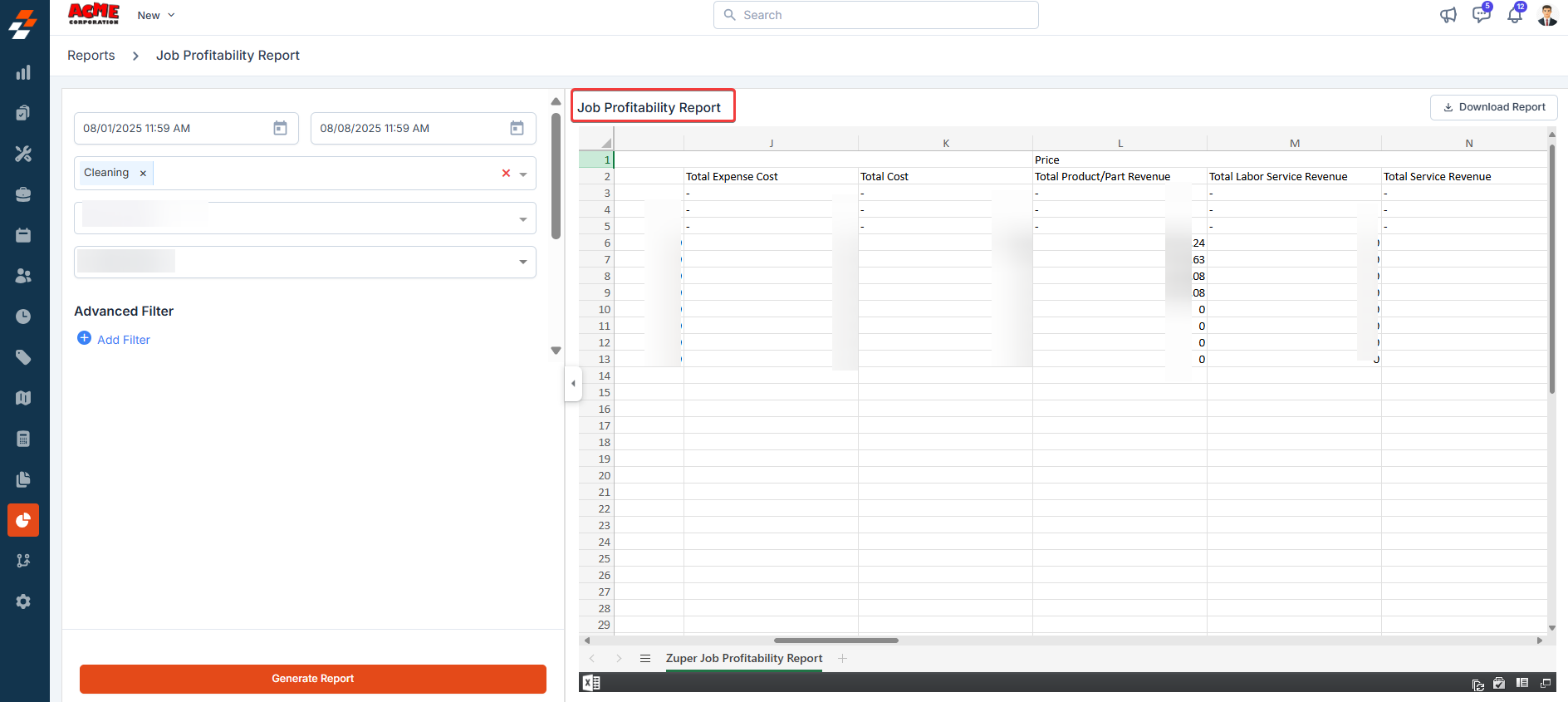
- Navigate to the Reports module from the left navigation menu.
- Select Job Profitability Report.
- Generate the report to view key financial metrics for each job, including:
- COGS
- Revenue
- Profit
- Profit Margin (%)
- Jobs created before the Job Costing feature was enabled may not have accurate labor line-item or profit details. These jobs will be updated with correct profitability data only when an action is performed on them, such as editing the job, assigning a technician, adding a time log, etc.
- Labor service pricing is not impacted by customer-specific Pricelists. Labor charges will remain as configured in the service catalog.
- In the mobile app, the Labor Code applies only to labor hours, not travel hours.
Job Costing Permissions
Zuper provides default access control for Job Costing features based on user roles. However, if your business requires a different level of visibility, you can customize access using Custom Roles. Default Role-Based Access| Role | Labor Line-Items tab | Job Profitability Bar |
|---|---|---|
| Admins | Accessible | Visible |
| Team Leaders (TLs) | Accessible | Not visible |
| Users (FEs) | Not accessible | Not visible |
-
Go to Settings > Users & Teams > Custom Roles.
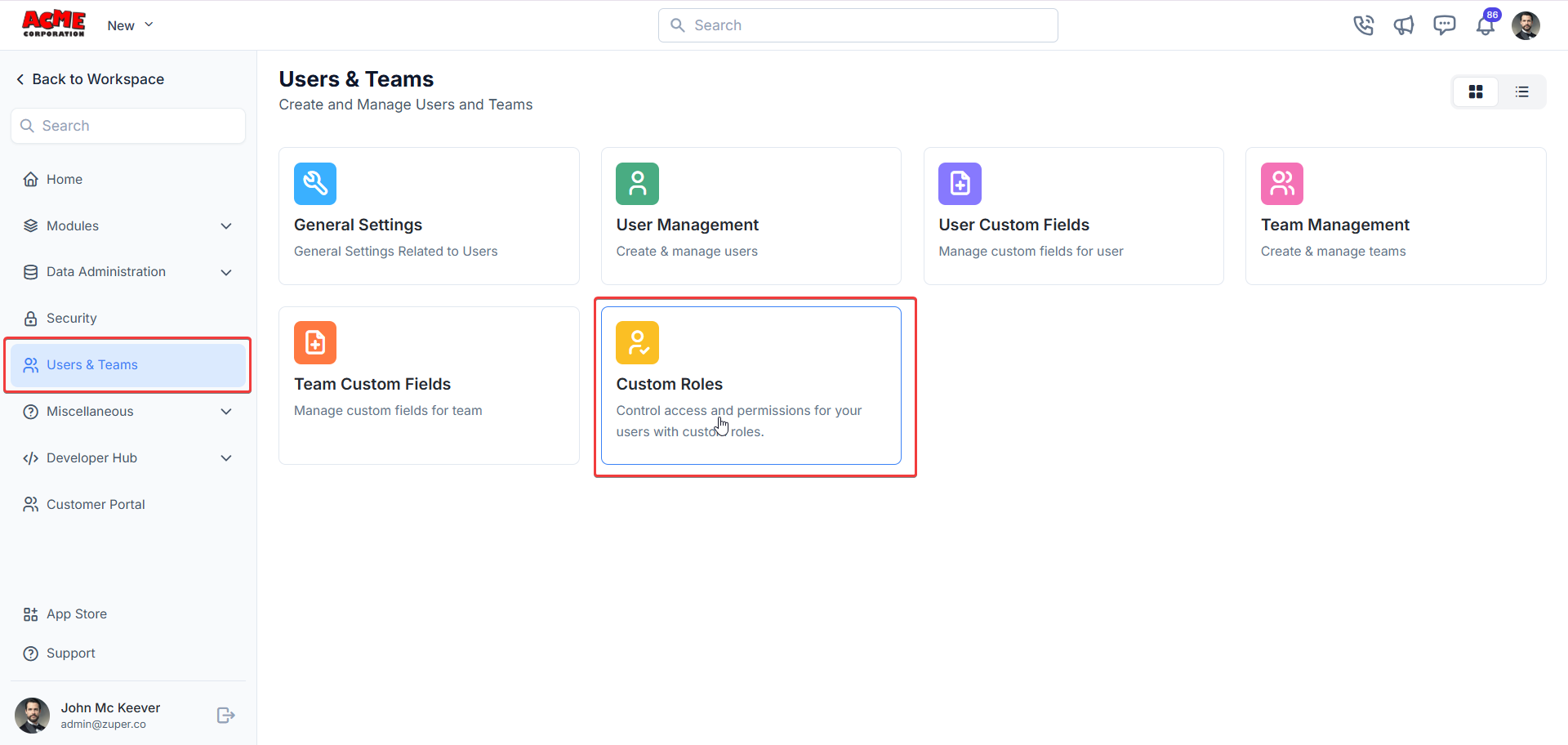
- Select an existing custom role or create a new one.
- Click the Jobs module.
-
Enable or disable the following permissions:
- Manage Labor Line Items – Controls access to the Labor tab within a job.
- View Job Profitability – Controls access to the Job Profitability Bar and the related profitability dashboard.
-
Click Save to apply the changes.
